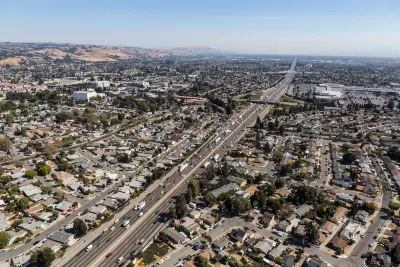One expert calls for collaboration between agencies in different fields to plan more thoughtfully for public health and equity.

In an interview with Smart Cities Dive’s Dan Zukowski, John Auerbach, former director of intergovernmental and strategic affairs at the Centers for Disease Control and Prevention, explains the link between transportation planning, public health, and equity.
According to Auerbach, “There’s a solid amount of evidence that shows that transportation has a significant impact on the health and well-being of the public. The social determinants of health really make a difference in what kind of housing people have and includes whether there are job opportunities, education opportunities.”
The placement of transportation infrastructure also impacts air quality. “As we look at the incidences of heart disease, asthma and other diseases, we know that the closer you are to a highway or an area where there’s a good deal of traffic, the more that you’re susceptible to a variety of different significant health issues,” Auerbach explains.
Looking to solutions, Auerbach says “An important way to change the equation is to build linkages between agencies that focus on health and transportation-related agencies at the federal, state and local levels.” Because transportation decisions impact public health, officials in both fields must work together. “Take the dollars that are available from a variety of sources to do planning that’s thoughtful for the entire region.”
FULL STORY: Transportation and public health ‘need to be working in collaboration with each other’

Planetizen Federal Action Tracker
A weekly monitor of how Trump’s orders and actions are impacting planners and planning in America.

Maui's Vacation Rental Debate Turns Ugly
Verbal attacks, misinformation campaigns and fistfights plague a high-stakes debate to convert thousands of vacation rentals into long-term housing.

San Francisco Suspends Traffic Calming Amidst Record Deaths
Citing “a challenging fiscal landscape,” the city will cease the program on the heels of 42 traffic deaths, including 24 pedestrians.

Defunct Pittsburgh Power Plant to Become Residential Tower
A decommissioned steam heat plant will be redeveloped into almost 100 affordable housing units.

Trump Prompts Restructuring of Transportation Research Board in “Unprecedented Overreach”
The TRB has eliminated more than half of its committees including those focused on climate, equity, and cities.

Amtrak Rolls Out New Orleans to Alabama “Mardi Gras” Train
The new service will operate morning and evening departures between Mobile and New Orleans.
Urban Design for Planners 1: Software Tools
This six-course series explores essential urban design concepts using open source software and equips planners with the tools they need to participate fully in the urban design process.
Planning for Universal Design
Learn the tools for implementing Universal Design in planning regulations.
Heyer Gruel & Associates PA
JM Goldson LLC
Custer County Colorado
City of Camden Redevelopment Agency
City of Astoria
Transportation Research & Education Center (TREC) at Portland State University
Jefferson Parish Government
Camden Redevelopment Agency
City of Claremont




























